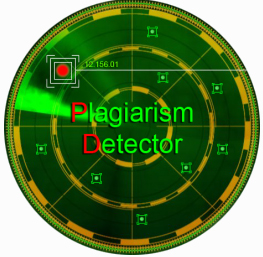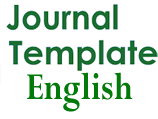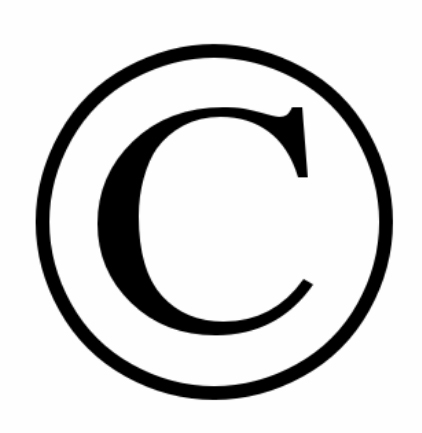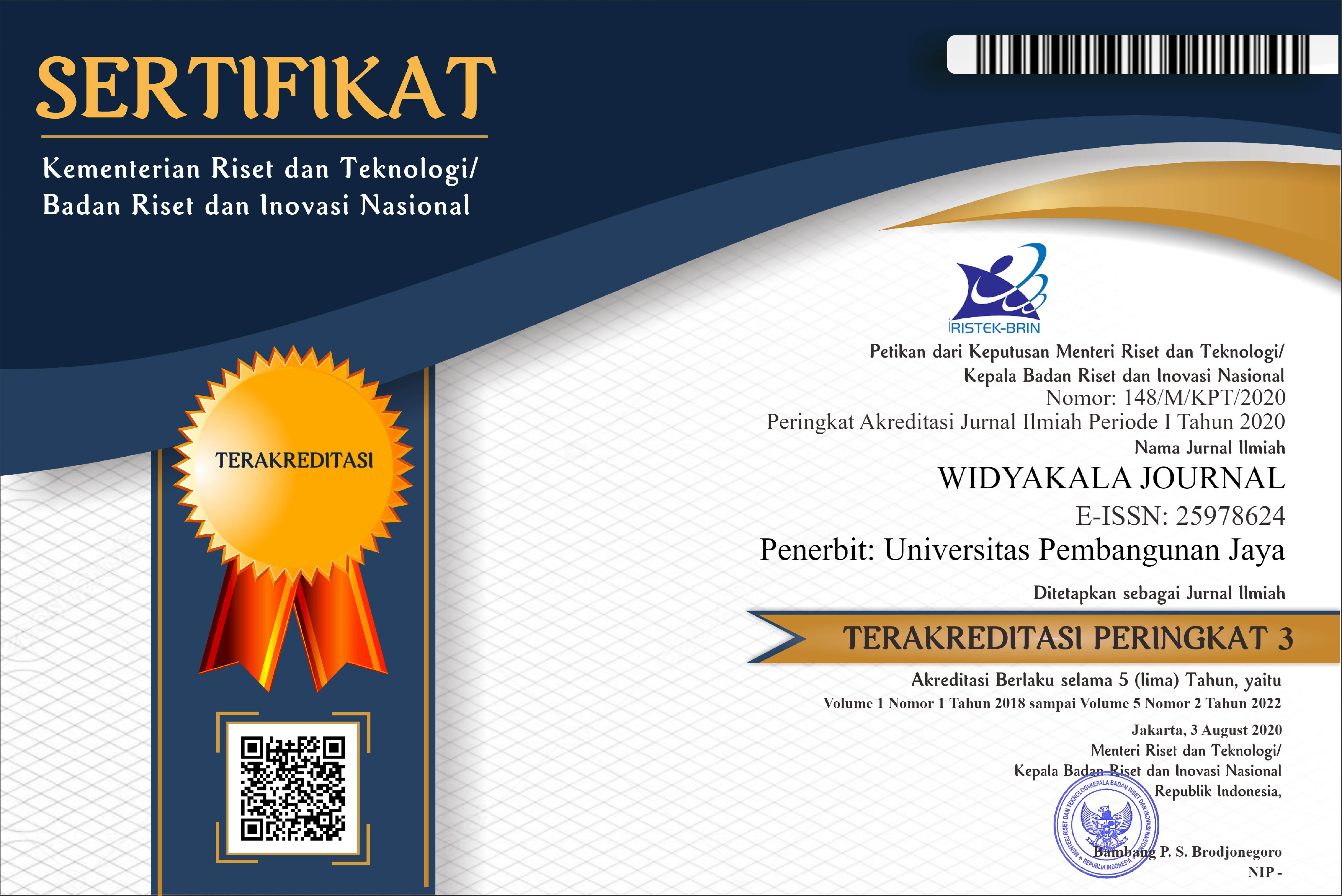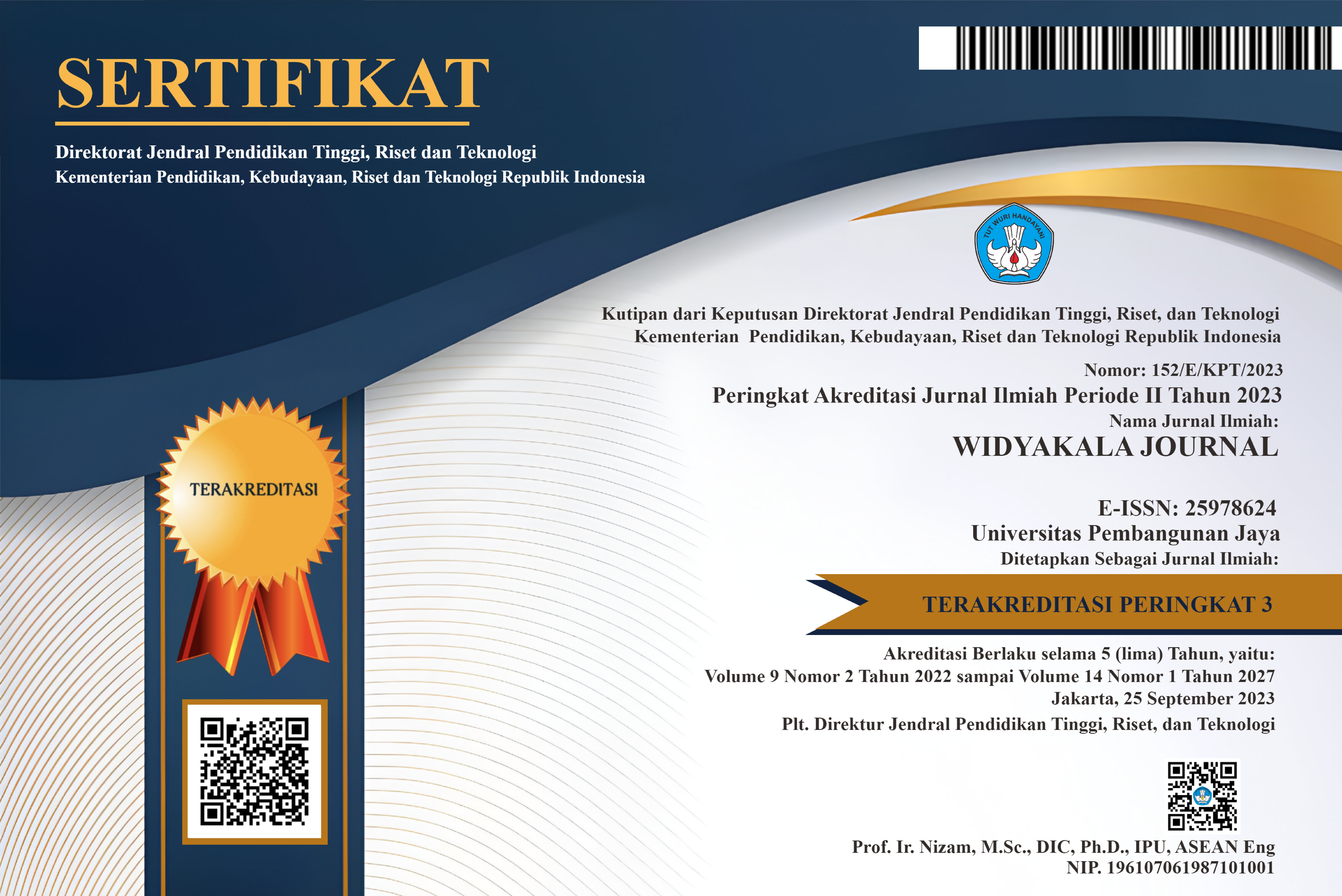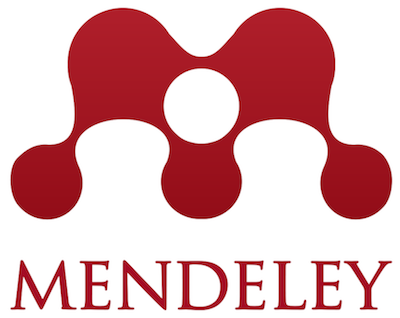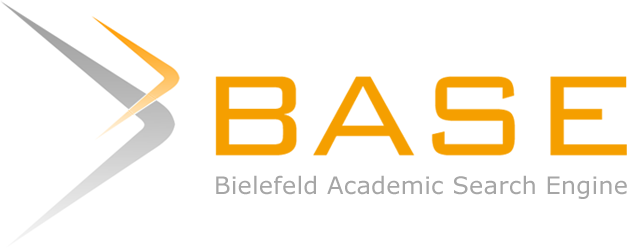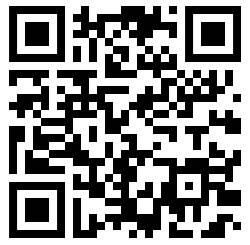Updated, March 2025
Brand Politik Presiden Jokowi Di Kanal Berita Daring
Abstract
Penelitian ini secara empiris meneliti citra brand Jokowi sebagai seorang petahana dalam berita-berita yang tayang di tiga laman berita daring dengan pengakses terbanyak di Indonesia, Tribunnews.com; Detik.com; dan Liputan6.com dalam kerangka pemerintahan periode pertama dalam rentang waktu tahun 2014 - 2018. Peneliti mengambil fokus bahwa brand dibangun dari asosiasi brand yang disematkan, isu yang dipilih, hingga visibility dan valensi berita yang terlihat dari sentimen pemberitaan. Peneliti juga menggali mediatisasi politik serta kampanye permanen yang dilakukan oleh Jokowi, petahana pada Pilpres 2019. Hasilnya, peneliti menemukan bahwa terdapat perbedaan antara brand yang dibangun oleh Jokowi saat menjadi kandidat pada 2014 dan presiden periode pertama. Namun terdapat kesamaan bahwa pemberitaan Jokowi lebih banyak bernada positif dibandingkan negatif. Temuan ini mengimplikasikan bahwa citra brand politik yang dibangun oleh Jokowi, memang dipengaruhi oleh asosiasi brand yang dikaitkan dengan namanya, isu yang diberitakan oleh media massa, hingga penempatan deskripsi tentang dirinya serta sentimen dalam konten pemberitaan.
Keywords
Full Text:
PDFReferences
Aaker, D. (1996). Building Strong Brands. New York: The Free Press.
Bawn, K., Cohen, M., Karol, D., Masket, S., Noel, H. & Zaller, J. (2012). A theory of political parties: group, policy, demands and nominations in American politics. Perspective on Politics, 10(3), 571-597.
Blumenthal, S. (1982). The permanent campaign. New York: Simon and Schuster.
Brockhoff, Thomas, K. & Dirk, K. (1994). Die Biirger-Wehr. Die Zeit. 21 January 1994
Dalton, R. J. & Klimengann, H.-D. (ed.). (2007). The Oxford handbook of political behavior. Oxford: Oxford University Press.
Dearing, J. W. & Everett, R. (1996). Agenda setting. thousand oaks: Sage Publishing Inc.
Doherty, B. (2017), The Rise of the President's Permanent Campaign. University of Kansas [20 Desember 2017].
Domke, D., Dhavan, V. S., & Daniel, B. W. (1998). Media priming effects: accessibility, association, and activation. International Journal of Public Opinion Research, 10(1), 51 – 74.
Eriyanto (2002). Analisis framing: konstruksi, ideologi, dan politik Media. Yogyakarta: PT. LKis Pelangi Aksara.
Esser, F. & Barbara, P. (2004). Comparing political communication: theories, cases, and challenges. Cambridge: Cambridge University Press.
Fachrudin, F. (2017). Survei CSIS: 68,3 persen responden puas kinerja pemerintahan Jokowi. Kompas.com. 2017 [20 Desember 2017].
Firmanzah (2007). Marketing politik antara pemahaman dan realitas. Jakarta: Yayasan Obor Indonesia
Guzman, F. & Vicenta, S. (2009). A political brand image scale: are political candidates brand? Brand Management, 17(3), 207 – 227.
Heclo, H. (2000). Campaigning and governing: a conspectus, dalam Ornstein, Norman J. & Thomas E. Mann (ed.). The permanent campaign and its future. Washington: American Enterprise Institute and The Brookings Institution. pp. 1 – 37.
Heding, T., Charlotte, F. K. & Mogens, B. (2010). Brand management: research, theory and practice. London: Routledge.
Hootsuite (2017). New research reveals global social media use increased by 21 percent in 2016 by Media Team [20 Desember 2017].
Indrananto, C. (2012). Local leaders and agents: dramaturgy on political communications of city mayor Joko Widodo of Solo. Tesis dari Universitas Indonesia.
Kapferer, J. N. (2008), The New Strategic Brand Management: Creating and Sustaining Brand Equity Long Term. London: Kogan Page.
Keller, K. L. (2003). strategic brand management: building, measuring, and managing brand equity. 2nd Ed. Prentice Hall.
Kornberger, M. (2010). Brand society: how brand transform management and life style. Cambridge, UK: Cambridge University Press.
Lees-Marshment, J. (2009). Political marketing: principles and applications. Abingdon, Oxon, New York: Routledge.
Mayhew, D. R. (1974). Congress: the electoral connection. Connecticut: Yale University Press.
Nimmo, D. (1978), Political Communication and Public Opinion in America. Santa Monica, California: Goodyear Publishing Company.
Perbawaningsih, Y. (2013). media darling: apa yang salah? Bernas Jogja [20 Desember 2017].
O’Cass, A. (1996), Political marketing and the marketing concept. European Journal of Marketing, 30 (10/11), 45 – 61.
Ross, K. & Virginia, N. (2003), Media and Audiences: New Perspectives. London: Open University Press.
O’Shaugnessy, N. (2001). The marketing of political marketing. Journal of Marketing, 35(9/10), 1407 – 1410.
Salamah, U. (2015), Brand pemimpin politik. Jakarta: Makna Informasi.
Sinaga, E. K. (2014). KPU: Jokowi-JK peroleh suara 53,15 persen dan Prabowo-Hatta 46,85 Persen.Tribunnews.com [20 Desember 2017].
Shah, D. V., Douglas, M. M., Melissa, R. G. & Nam, J. L. (2009). Framing and agenda setting dalam nabi, Robin L. & Mary Beth Oliver (ed.). The Sage Handbook of Media Processes and Effects. Thousand Oaks, CA: Sage Publications.
Sobur, A. (2006). Analisis teks media. Bandung; PT Remaja Rosdakarya
Stromback, J. (2008). Four phases of mediatization: an analysis of the mediatization of politics. Press/Politics, 13(3). London: Sage Publications.
Suryawati, I. (2011), Jurnalistik Suatu Pengantar. Bogor: Ghalia Indonesia.
Taylor, D. G. (2010). I speak, therefore i am: identity and self- construction as motivation to engage in electronic word of mouth. Disertation from University of North Texas.
Urfan, N. F. (2011). Membaca gejala “mediatisasi” politik di Indonesia. Jurnal Komunikasi, 6 (1), Oktober 2011.
Zavattaro, S. M. (2010). Brand Obama: the implications of a branded president. Administrative Theory and Praxis, 32(1), 123 – 128.
DOI: https://doi.org/10.36262/widyakala.v6i2.135
Refbacks
- There are currently no refbacks.
Copyright (c) 2019 WIDYAKALA: JOURNAL OF PEMBANGUNAN JAYA UNIVERSITY

This work is licensed under a Creative Commons Attribution-ShareAlike 4.0 International License.
Redaksi Jurnal Widyakala
Lembaga Penelitian dan Pengabdian Kepada Masyarakat (LP2M)
Universitas Pembangunan Jaya
Jalan Cendrawasih Raya Blok B7/P, Sawah Baru, Ciputat, 15413
Telp : 021-7455555 ext 1311
widyakala.journal@upj.ac.id

